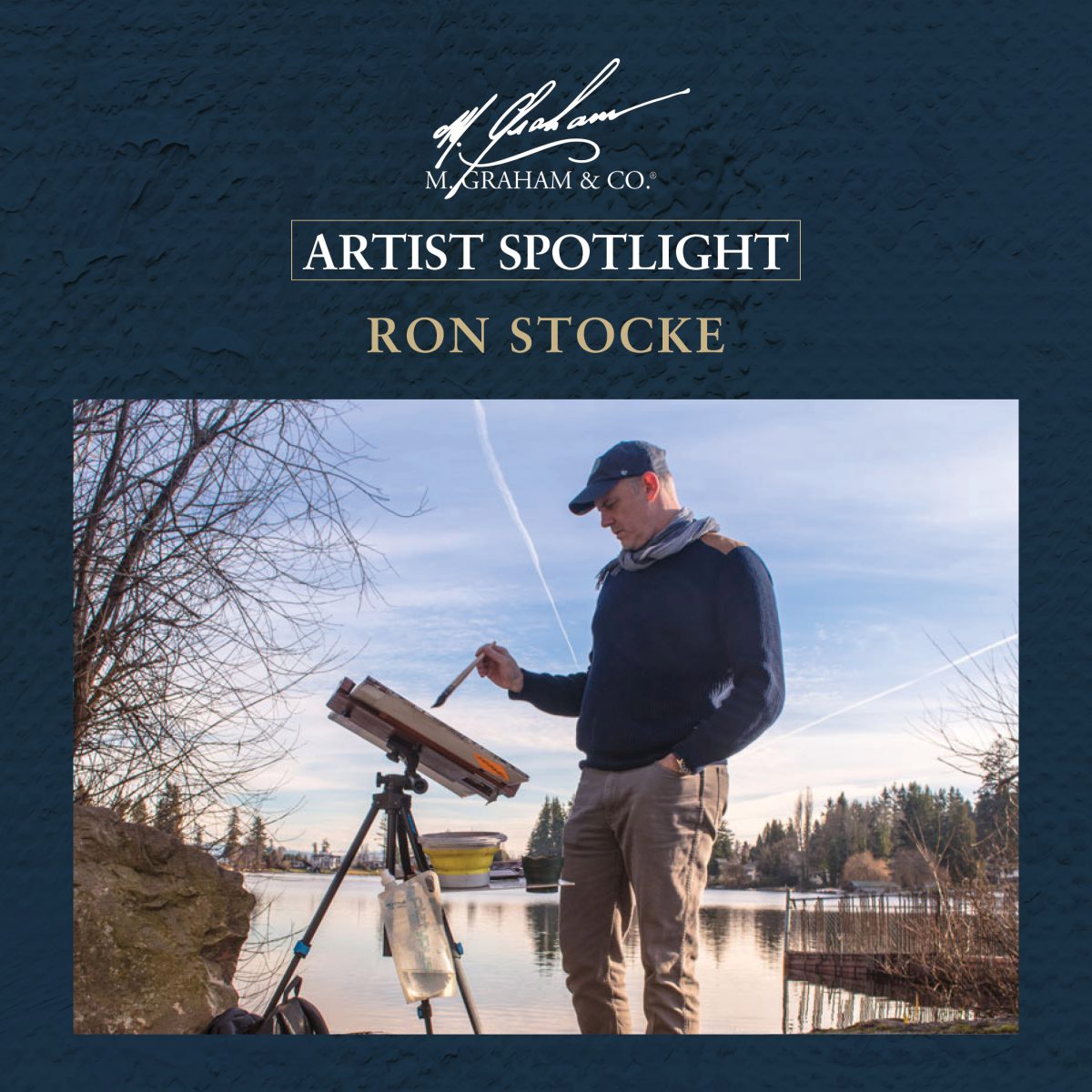
Artist Spotlight: Ron Stocke
Ron Stocke, an award-winning watercolor artist and 15+ year M. Graham watercolor ambassador, shares advice, ways to overcome watercolor challenges and details about his new book En Plein Air in his interview in the latest M. Graham blog.
- You tell us you picked up watercolor painting as a young child. What drew you to watercolor over other mediums?
For me, watercolor seemed to check all of the right boxes when I was young. It offers intense color, portability, and it seems to have a life of its own. As I matured as an artist and developed my skills, I have relied on these qualities to push the boundaries of what this fantastic medium can do.
- You have been an M. Graham watercolor ambassador for over 15 years, what do you consider to be the best feature of our watercolor paints?
The color intensity is particularly strong in the M. Graham line of watercolor paints. However, it is the honey that is added to the recipe that sets this paint aside from other brands. Whether I am painting in the studio, or painting on location, I can always rely on the color being ready to use. This is a quality I look for in all of my materials.
- How do you form the perfect watercolor palette for your urban landscapes?
Every artist gravitates toward a certain color palette. Having a series of warms and cools of your primaries is always a good idea. Since I am more of a value painter, I tend to focus my palette on mixing colors to achieve warm and cool grays.
- We heard you just published your first book En Plein Air Watercolor. What can you tell us about the book and your experience writing it?
The book was an exciting opportunity to share with other artists many of the lessons and techniques I have developed over years of painting. I hope that those who purchase the book take away some knowledge that will help their painting experience.
- What do you feel is the biggest challenge faced by plein air watercolor artists and how does your book address it?
Yes, painting en plein air can be frustrating for artists at any level. I think that most artists who set out to paint on location early on intend to create a masterpiece. This can frustrate a lot of artists. Try to break down your painting into smaller more manageable segments. Light and shadow, editing and simplifying, and achieving the correct values are the elements I focus on in my work. If you do this correctly, your painting experience will be more enjoyable and you may end up with a well-executed piece.
- Discuss a guiding analogy you use in your book, “if you can’t hit it with a baseball, then don’t paint it”.
I’ve been using this analogy for more than a decade now and it has become second nature at this point. What I am basically saying here is don’t feel like you need to paint everything. For example: If your subject is a café in front of the Eiffel Tower, don’t feel like you need to paint every girder or architectural detail in the distant objects. Not only will painting every detail detract from the focal point of your work, but it will confuse the viewer.
- How did you establish yourself as a working artist?
I entered every show I could. I submitted my work wherever and whenever I could. Eventually, I started getting into shows and magazines and winning awards. All of this gave me the confidence I needed to continue. Find galleries where your work stands out and eventually you will develop a following.
- Any business advice you can share with artists who want to do watercolor for a living?
It’s very simple: Treat your art like a business. This doesn’t mean you are selling out or diminishing the creative qualities of your work. It simply means that after the work is done you are left with a product that needs to be shown to the world. Now go for it!
Follow Ron Stocke
Instagram: @ronstocke
Website: Ronstocke.com
Facebook: Ron Stocke Watercolors

